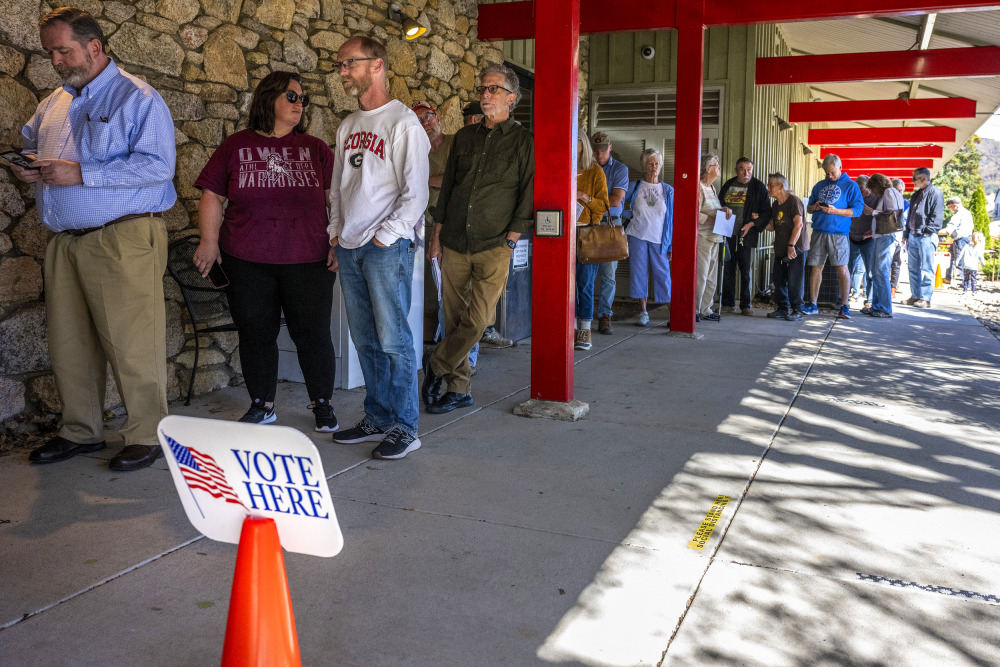
This article is more than
9 year oldPredictions that blacks, women and Millennials would not vote Trump proved largely untrue
Many predicted the missteps and scandals of President-elect Donald Trump’s campaign would lead to weakened support among women, blacks and young voters in Tuesday’s election.
Those concerns proved to be largely unfounded, exit poll data shows.
Although Trump lost among women, his share of the vote still closely tracked support for Republican presidential nominee Mitt Romney in 2012.
Democratic presidential nominee Hillary Clinton won the female vote 54%-42%. In 2012, President Obama won among women 55%-44%.
Women accounted for about 52% of the electorate on Tuesday, a 1-point drop from 2012 — even though this year’s election was the first in which a woman was the presidential nominee of a major political party.
Trump’s efforts to win female voters suffered after the release of an Access Hollywood recording from 2005 in which Trump was caught making vulgar remarks about women, as well as allegations of sexual misconduct by Trump from at least 10 women.
PRESIDENT
View Full Results
Updated Nov. 9, at 1:37 p.m.
228
Clinton
59,606,335
270 TO WIN
279
Trump
59,399,274
Exit polling showed those issues hurt Trump among voters of both genders, but particularly with women.
Nearly two-thirds of voters said they were bothered by Trump’s treatment of women, and half reported that his conduct bothered them “a lot.”
While Trump’s support among Millennials mirrored Romney’s 2012 figures, Clinton saw her numbers slip significantly below the share of ballots cast for Obama by voters under 30 in 2012.
Among voters 18 to 29, Clinton defeated Trump 55%-37%. The split represented a tighter margin than in the 2012 election, when Obama defeated Romney 60%-37%.
Minor-party candidates performed strongest among voters under 30, with Libertarian Party candidate Gary Johnson earning 5% of the vote in that age group and Green Party nominee Jill Stein winning 2%.
First-time voters of all ages voted for Clinton over Trump 56%-40%.
While black voters overwhelmingly supported Clinton, Trump lost by a narrower margin than his predecessor.
Trump won 8% of the black vote, compared with 6% of the black vote earned by Romney in 2012.
About 88% of black voters supported Clinton, representing a decline from 2012, when 93% of black voters cast their ballot for Obama.
Despite weaknesses among key demographics, Clinton still led Trump in the popular vote.
Several trends in the electorate may have helped hand Trump the advantage in the Electoral College.
Clinton suffered from weaker support among union households than Obama, who won 58% of voters who belong to union households in 2012. Clinton won the vote of only 51% of union households.
Trump’s victory came partly through strong performances in traditionally industrial states including Michigan, Wisconsin, Ohio and Pennsylvania, where union households represent an important voting group.




